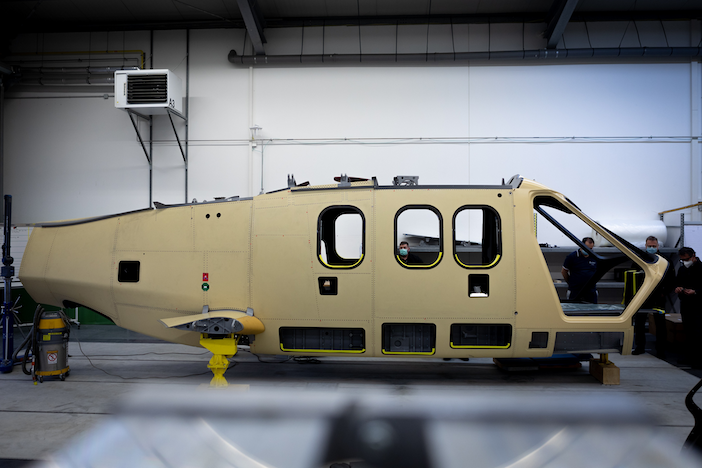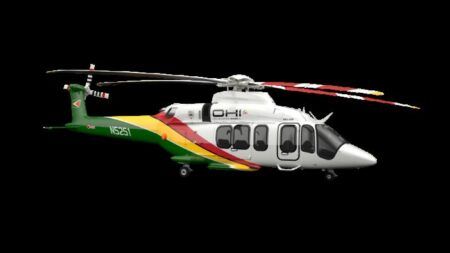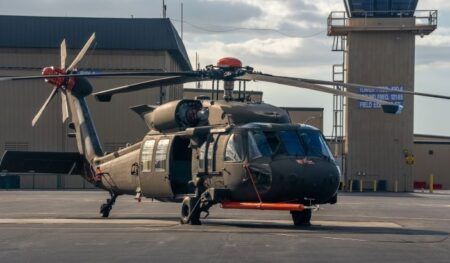Airbus Helicopters’ engineers at Donauwörth, Germany have begun the assembly of the company’s RACER high-speed compound helicopter demonstrator and plan to start its flight testing campaign next year.
RACER (Rapid And Cost-Efficient Rotorcraft) aims to be 50% faster than conventional helicopters while being 25% cheaper to run, less noisy and 15% more fuel efficient.
Plans for RACER were first revealed at the Paris Air Show in 2017 with a first flight initially planned for early 2020. The helicopter’s design was frozen in 2019 and manufacturing of long-lead parts started the same year.
The helicopter features several new technologies and design innovations and will use two Safran Aneto-1X engines as part of a hybrid-electrical system, which will allow for one of the two engines to be shut down while in cruise flight.
RACER also has box-wings, joined at the tips by propellers in a bullet-shaped casing that increase the cruise speed in horizontal flight.
RACER’s development program, which is part of the EU’s Clean Sky 2 joint industry and government funded research program, stalled during the pandemic.
This first assembly phase is now taking place over the coming months and will involve the installation of several major components such as the canopy, the box-wings, the fuel system, the cowlings, and more. Earlier this month the centre fuselage was completed, as announced by Airbus Helicopters’ CEO Bruno Even this week in a tweet.
Our high-speed demonstrator #Racer is now being assembled ahead of flight tests in 2022. This @cleansky_ju research programme with 40 partners in 13 countries aims to reduce CO2 emissions & sound levels. I am so pleased to see this fantastic European adventure taking shape. pic.twitter.com/kxinammdI8
— Bruno Even (@BrunoEven) April 14, 2021
Several European countries are designing and making different parts of RACER: the central fuselage is from Romania, the side shells and canopy are from Germany, the fuel systems and engines from France, the wings from the UK, the landing gear from Lithuania and the rear fuselage from Spain.
Airbus Helicopters plans to transfer the RACER demonstrator to its site in Marignane, France for final assembly and subsequent launch of the flight campaign in 2022.





